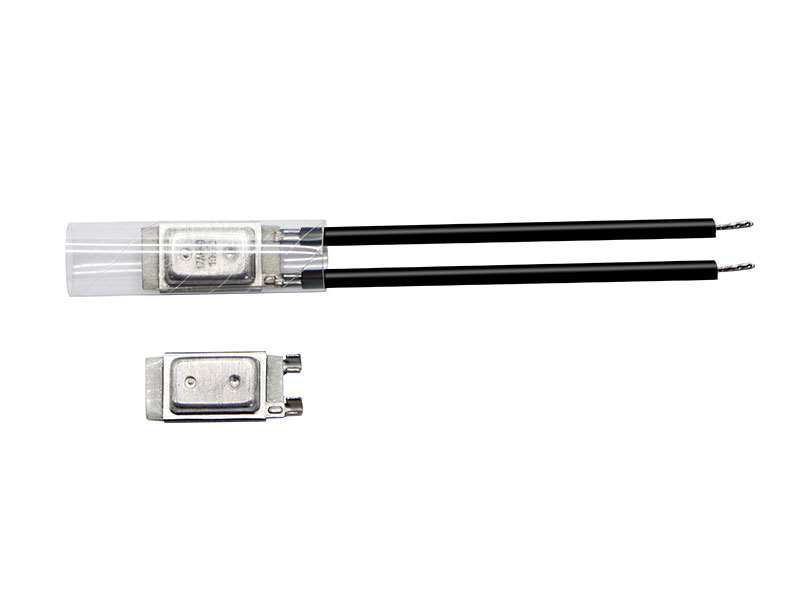Types of motor thermal protectors
 Sep 02, 2021|
Sep 02, 2021| View:609
View:609Bimetal protector is actually a switch or relay made of bimetal sheet, which is widely used because of its low price. The bimetallic sheet is composed of two layers of alloy with different thermal expansion coefficient, in which the larger expansion coefficient is called active layer; Those with smaller expansion coefficients are called passive layers. Because the expansion coefficient of the two layers is different, the bimetal sheet will bend and deform when the temperature increases, and will return to its original appearance when the temperature decreases. Bimetal protector can be divided into two types: motor thermal protector and overload protector. The heat protector itself does not generate heat, the heat comes from the heat of the protected part. There is an electric heater (electric wire or electric plate) in the overload protector. When the current is too large, the heating of the electric heater will cause the deformation of the bimetal sheet.
The motor thermal protector looks like a pencil head. It is usually tied or pasted in the position where the stator winding temperature is relatively high. The winding temperature is transmitted to the bimetal sheet through the metal shell. When the winding temperature exceeds the set temperature, the thermal protector jumps off, and the control loop connected with the thermal protector is disconnected, thus triggering the main circuit contactor to jump off, and the compressor stops running.

The thermal response time of the motor thermal protector is an important parameter. It can generally operate within a few seconds after reaching the set temperature. When installing, we must ensure that the thermal contact is good, otherwise, it cannot be acted in time and the thermal protection effect cannot be played. Different from thermal protectors, overload protectors have one or more small electric heaters (heating wires or heating plates) connected in series in the single-phase or three-phase main circuit. When the motor is overloaded, the current increases, the temperature of the electric heater rises rapidly and causes the deformation of the bimetal sheet, the contact connecting the main circuit is separated, and the compressor stops.
The overload protector can also transfer heat through the housing, so the overload protector itself is also a thermal protector. Overload protector has a large volume and slow thermal response.
In addition, the external overload protector can not be used as a thermal protector. In terms of installation, there are both advantages and disadvantages. The motor thermal protector is independent of the main circuit, so there is almost no limit to the motor current, but it needs to be connected in series in the control circuit, and the wiring is complicated. Overload protector is directly connected in series in the main loop, without additional wiring, simple and intuitive, but not suitable for electrical appliances with large current, so as to avoid contact arc pulling or welding.
Motor thermal protectorcan be a very good deal with motor overheating, such as abnormal voltage, phase imbalance caused by overheating of lack of phase or even lack of motor cooling (such as refrigerant leakage and back to the low gas pressure) caused by overheating, high and low voltage mixes up (vortex disk damage, damage to the piston ring, and pressure relief valve opens, etc.) caused by overheating, bad lubrication and even blocked holding shaft caused by overheating.





